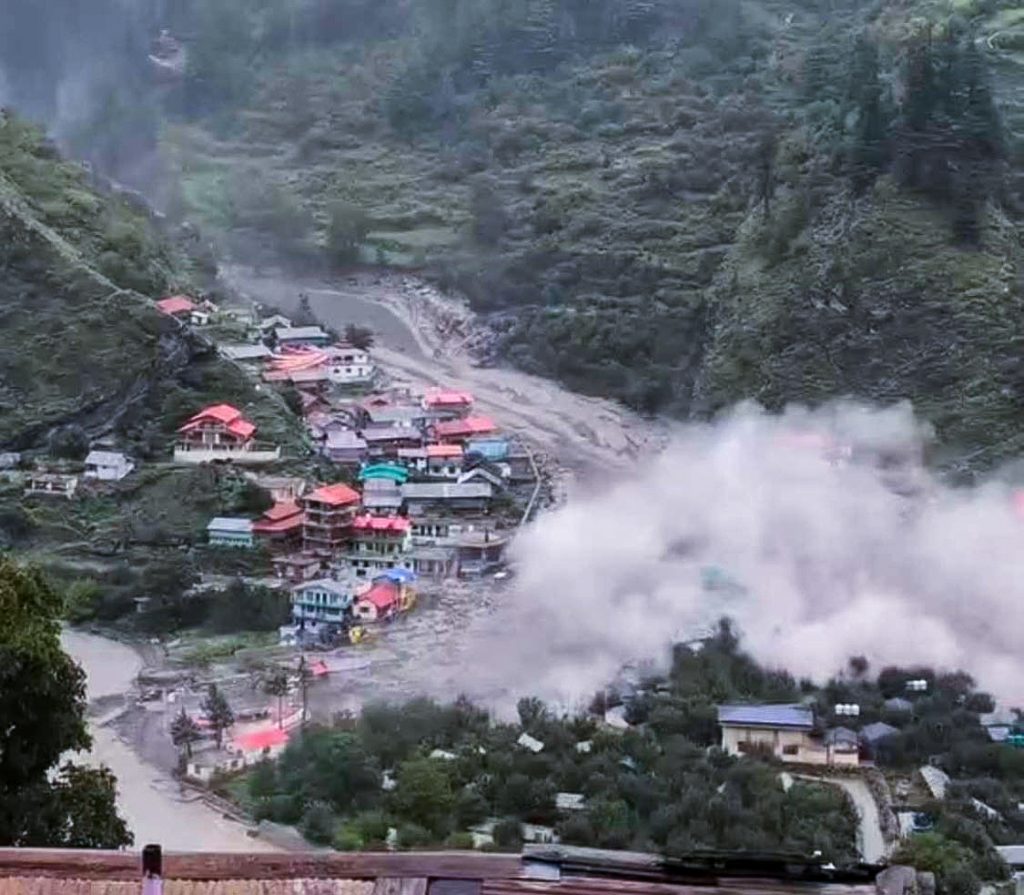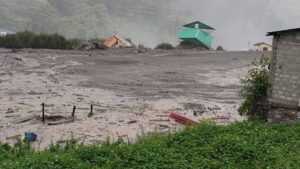
(ddindia.com)
Relentless monsoon rains and a violent cloudburst have devastated parts of Uttarakhand’s Uttarkashi district. In the quiet village of Dharali, a wall of water and sludge tore through homes, roads, and lodges.
At least five people lost their lives, and many remain missing. Rescue teams, due to blocked roads and broken bridges, used helicopters, ziplines, and earthmovers to reach over 200 stranded residents.
These aren’t isolated tragedies. On June 29, a sudden cloudburst at Silai Band on the Barkot–Yamunotri route damaged an under-construction hotel and left eight to nine workers missing.
Less than a month later, on July 26, landslides hit Rudraprayag, blocking the trek route to Kedarnath. Authorities evacuated over 1,600 Chardham pilgrims, narrowly avoiding disaster.
According to various reports, this is not the first time such cloudbursts have struck the region, similar events have occurred here in past monsoons, raising concern about a dangerous recurring pattern.
Monsoon destruction spreads beyond Uttarkashi

The destruction isn’t limited to the hills. In Pauri Garhwal, heavy rain swelled streams and collapsed bridges.
In West Uttar Pradesh, parts of Haridwar and Motichur were cut off after a landslide stopped train operations. Power outages, blocked highways, and stranded families have become alarmingly common across the region.
Experts have long warned that Uttarakhand’s fragile Himalayan landscape is especially vulnerable to such disasters. Areas between 1,000 and 2,000 meters in elevation, like Uttarkashi at 1,160 meters, are densely populated valley folds that face frequent extreme weather events.
A 2023 study noted that cloudburst intensity is particularly high in Uttarakhand, and these events are growing more frequent and severe, affecting larger communities than in the past.
Monsoon risks worsen with human activity

Rapid construction, deforestation, and unregulated tourism have only made things worse. Hotels rise on riverbeds. Roads slice through unstable slopes. As a result, rainfall that once drained away now turns deadly.
Since 2015, over 300 people have died in landslides across the state. Districts like Pithoragarh, Rudraprayag, Tehri, and Uttarkashi continue to bear the brunt. Locals, already dealing with isolation and poor infrastructure, now live in constant fear each monsoon.
A Call for Resilience
These recurring disasters are more than headlines. They shatter homes, uproot lives, and silence entire villages. As the monsoon grows fiercer with climate change, India must rethink how it builds, plans, and protects its most vulnerable communities.
Notably, these extreme weather events aren’t unique to India. Just weeks ago, a devastating mudslide in southern Russia’s North Caucasus region swept through mountain villages, destroying homes and cutting off road access.
Emergency teams are still combing through debris, searching for missing persons. This global parallel underscore how fragile mountain regions everywhere are becoming in the face of intensifying climate-driven disasters.
In the face of these mounting challenges, it becomes clear that early action is no longer optional, it is more than essential. Governments, communities, and international bodies must invest in sustainable planning, early warning systems, and climate adaptation. The clock is ticking, and the next disaster may not wait.
For more updates, stay tuned with The World Times.



